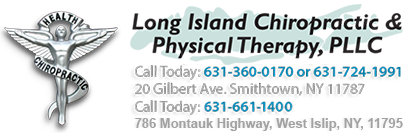The most basic intravenous access involves a needle infiltrating the skin and entering a vein which is related to a needle or to outside tubing. This is used to direct the best treatment. In circumstances where a patient is presumably going to get various such iv therapy near me in a short period (with following bet of injury to the vein), conventional practice is to implant a cannula which leaves one end in the vein, and comes about medicines can be controlled successfully through tubing at the furthest edge. From time to time, different remedies or medicines are coordinated through a comparable IV line.

IV lines are named “central lines’ ‘ if they end in a huge vein close to the heart, or as “periphery lines’ ‘ expecting their outcome is to a little vein in the edges, similar to the arm. An IV line can be hung through a peripheral vein to end near the heart, which is named an “unexpectedly implanted central catheter” or PICC line. If an individual is most likely going to require a long stretch of intravenous treatment, a clinical port may be inserted to engage more direct reiterated permission to the vein without infiltrating the vein again and again. A catheter can moreover be installed into a central vein through the chest, which is known as a tunnelled line. The specific sort of catheter used and site of expansion is affected by the best substance to be controlled and the sufficiency of the veins in the best site of expansion.
Clinical purposes
- Fluid courses of action
Fluids may be managed as a part of “volume expansion”, or fluid replacement, through the intravenous course. Volume expansion involves the association of fluid-based plans or suspensions planned to target an unequivocal area of the body which needs more water. There are two essential kinds of volume expanders: crystalloids and colloids. Crystalloids are liquid plans of mineral salts or other water-dissolvable particles. Colloids contain greater insoluble molecules, similar to gelatin. Blood itself is seen as a colloid.
Support courses of action which are used to address acidosis or alkalosis are in a like manner controlled through intravenous access. Lactated Ringer’s response used as a fluid expander or base solution for which prescriptions are added moreover has them pad effect. Another plan coordinated intravenously as a buffering game plan is sodium bicarbonate.
- Remedy and treatment
Medications may be mixed into the fluids referred to above, generally normal saline, or dextrose solutions. Compared with various courses of association, for instance, oral remedies, the IV course is the speediest technique for passing fluids and drugs generally on through the body. Subsequently, the IV course is routinely enjoyed in emergency conditions or when a fast start of action is appealing. In very hypertension (named a hypertensive emergency), IV antihypertensives may be given to quickly decrease the beat in a controlled manner to hinder organ damage.
In atrial fibrillation, IV amiodarone may be figured out how to try to restore normal heart rhythm. IV medications can similarly be used for continuous clinical issues like illness, for which chemotherapy drugs are consistently coordinated intravenously. On occasion, for instance, with vancomycin, a stacking or bolus part of the prescription is given before beginning a dosing routine to even more quickly increase the combination of medication in the blood.




